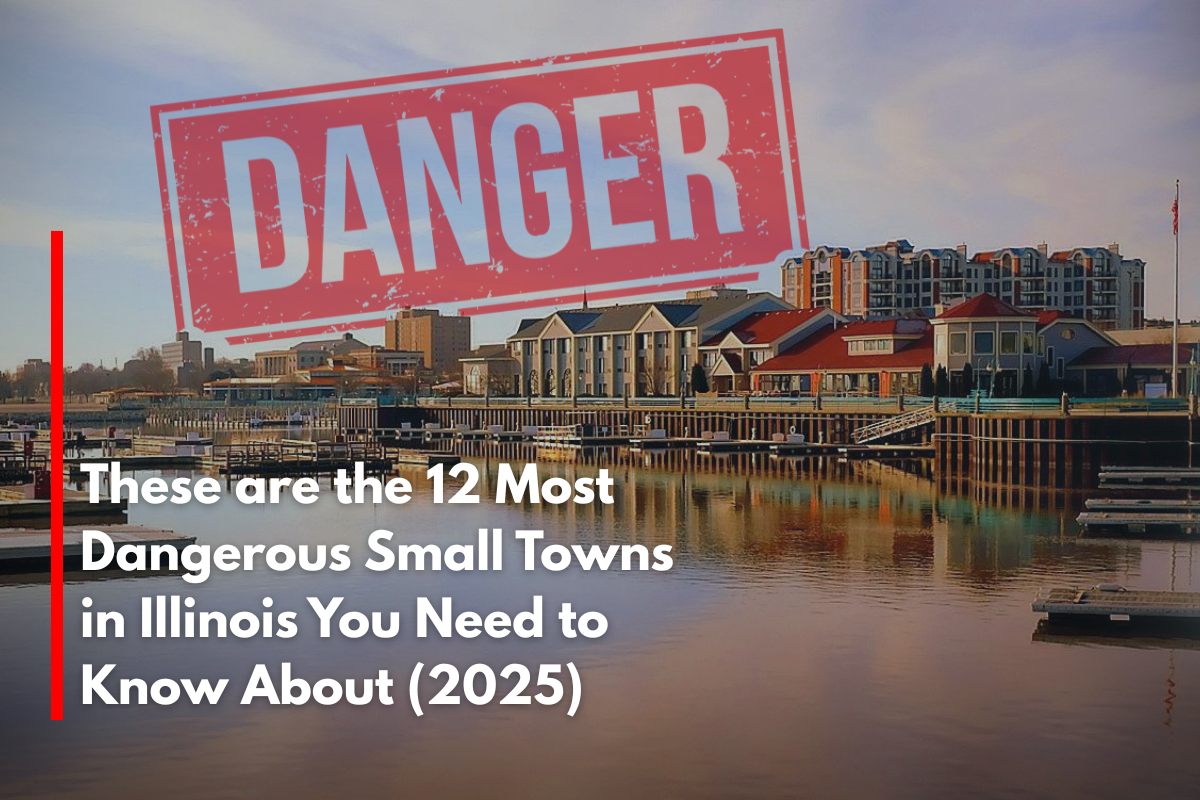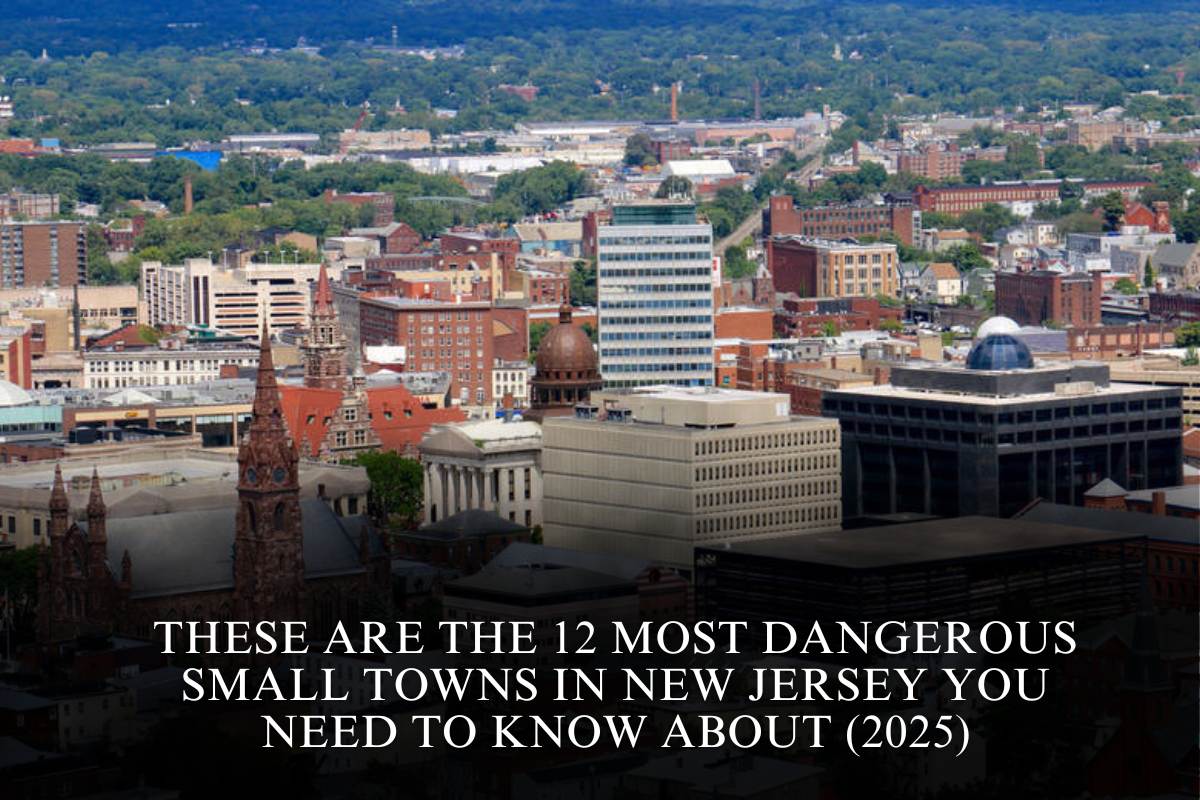Illinois has a variety of small towns that, despite their size, face significant safety challenges. Data for 2025 reveal certain communities with crime rates considerably above state and national averages. Understanding these towns and the issues they confront can help residents and visitors navigate safety concerns intelligently. Here are 12 of the most dangerous small towns in Illinois, including where they are located and current safety conditions.
1. East St. Louis, St. Clair County
East St. Louis consistently ranks as one of Illinois’ most dangerous cities. Though it is technically a city, its population is under 30,000, often lending it small-town characteristics. Violent crimes including homicides and assaults are alarmingly high, with rates many times above the national average. Economic hardship, poverty, and problematic infrastructure add to these problems, making East St. Louis a critical focus for law enforcement and social services.
2. Harvey, Cook County
Harvey sits just south of Chicago and struggles with extraordinarily high rates of violent crime and property crime. Approximately one-third of residents live below the poverty line, and the city suffers from decades of economic decline, business closures, and underfunded public services. Gang violence and drug-related offenses are particularly prevalent.
3. Rockford, Winnebago County
Though Rockford is the largest city on this list, many of its neighborhoods show small-town feels combined with urban challenges. It reports sharp increases in aggravated assault and robbery. High crime in residential areas and commercial districts has raised public concerns about safety and policing.
4. Rock Island, Rock Island County
Rock Island has seen increasing violent crime rates, especially weapon-related offenses. The city experiences difficulties with drug trafficking and gang-related activities that adversely impact community safety.
5. Cairo, Alexander County
Cairo is a smaller community but with a disproportionately high violent crime rate compared to its size. Economic struggles, depopulation, and limited resources exacerbate safety and quality of life concerns.
6. East St. Louis
East St. Louis, mentioned initially for its significance, continues to be the top concern for safety in Illinois small towns with violent crime rates over 400 per 1,000 residents.
7. Danville, Vermilion County
Danville faces a multi-faceted crime problem, including violent incidents and narcotics trafficking. Its border location near Indiana contributes to drug flow and enforcement challenges.
8. Joliet, Will County
Joliet has been grappling with increases in robberies and burglaries. Recidivism from nearby correctional facilities and economic factors contribute to persistent crime problems.
9. Peoria, Peoria County
Certain neighborhoods in Peoria have crime rates resembling small-town challenges rather than urban settings. Violent crime, particularly assaults and shootings, is a concern in some communities.
10. Cicero, Cook County
Cicero sees gang violence and street-level crime that disconcert residents and law enforcement alike. Efforts to curb violence have included community policing and intervention programs.
11. Springfield, Sangamon County
Springfield, Illinois’ capital, has sites with heightened crime rates impacting smaller, community-like neighborhoods. Repeat offenses and drug activity remain problematic.
12. Cahokia Heights, St. Clair County
Formed from the merger of Cahokia and other communities, Cahokia Heights also reports elevated crime, particularly violent offenses and associated social issues.
Common Factors and Challenges
Economic Hardship: Many of these towns face significant poverty and unemployment which correlate strongly with crime rates.
Drug and Gang Activity: Narcotics trafficking and gang disputes form the backbone of much violent crime.
Infrastructure Decay: Underfunded police departments, poor lighting, and neglected public spaces contribute to unsafe environments.
Social Services: Limited access to education, health, and social support exacerbates crime cycles.
Locations to Note
East St. Louis: Located at the confluence of the Mississippi and Missouri Rivers, across from St. Louis, Missouri.
Harvey and Cicero: Suburbs south and west of Chicago respectively.
Rockford: Northwestern Illinois city near the Wisconsin border.
Cairo: Southern tip of Illinois on the Ohio River.
Danville: Eastern Illinois near the Indiana border.
Joliet: About 30 miles southwest of Chicago.
Peoria: Central Illinois city on the Illinois River.
Springfield: State capital, centrally located.
Cahokia Heights: Southwestern Illinois near East St. Louis.
Illinois’ most dangerous small towns illustrate how economic, social, and law enforcement factors intertwine to create challenging safety environments. While these places face serious obstacles, ongoing community efforts aim to reduce violence, improve quality of life, and restore hope for residents. Awareness of the geography and realities of these towns can help foster better understanding and targeted responses to Illinois’ public safety issues in 2025.
Remaining informed about local conditions, supporting community programs, and engaging in neighborhood initiatives are vital steps for everyone invested in safer Illinois towns.
Sources
(https://reolink.com/blog/most-dangerous-cities-in-illinois/)
(https://www.youtube.com/watch?v=LvmlQnDtuIk)
(https://realestate.usnews.com/places/rankings/most-dangerous-places)
(https://www.safehome.org/safest-cities/il/)
(https://www.youtube.com/watch?v=FYzMyO0RO3E)







